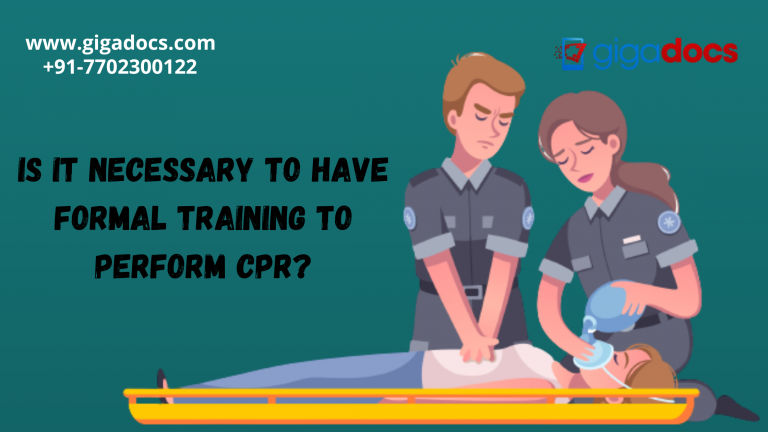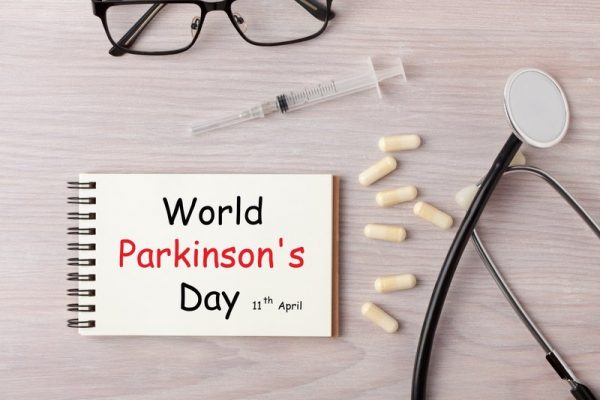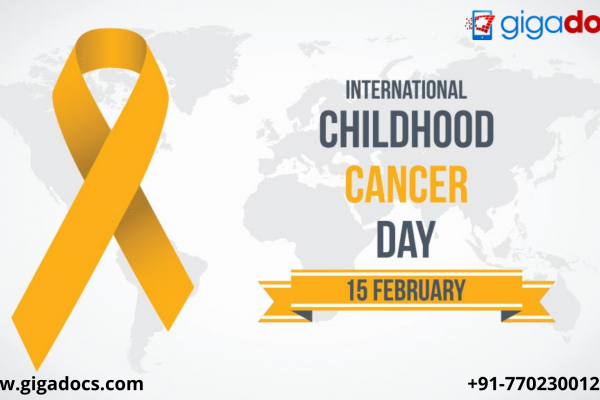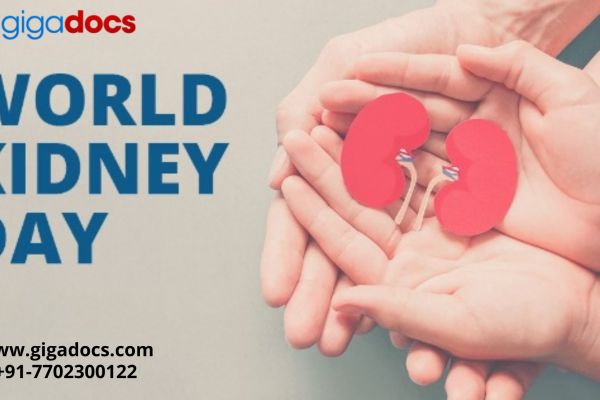Chronic diseases like heart attacks and cardiac arrests are common and are not associated with one’s age. Needless to say, cardiac arrest affects many people, and look around you, and we are sure someone will be a cardiac ailment patient. CPR (Cardiopulmonary Resuscitation) saves a lot of people who have been affected by cardiac arrests. Did you know CPR can be a survivor’s grace if given during the first few minutes, doubling, or tripling an affected person’s chance of survival? Gigadocs provide an informative blog on CPR, important CPR techniques, how to administer CPR for different diseases, and types of CPR during Health Literacy Month. It also explains whether formal training is required to perform CPR and concludes with how to perform CPR and the steps to give CPR breaths. Without further delay, let’s know more about CPR this heart literacy month-
Cardiopulmonary Resuscitation, as the name suggests, is a life-saving procedure for patients when their heart stops beating. CPR maintains blood flow and even partially extends the possibility of a successful resuscitation once trained medical personnel arrives on the scene. Approximately 9 out of 10 people with cardiac arrest outside of a hospital die. However, CPR can help improve those chances.
Aside from the heart, CPR aids in the preservation of brain function as well as the restoration of blood circulation and oxygen supply to the patient’s vital organs. Let’s read more about the important CPR techniques in our next section-
Important CPR Techniques:
- High-Frequency Chest Compressions: Helps to revive the heart in the event of a heart attack.
- CPR with an open chest accesses the heart via a thoracotomy: Compressions are performed by pressing the sternum with the thumb and fingers or the palm and extended fingers.
- Compression of the Abdomen Interposed CPR: Interposed Abdominal Compression (IAC) CPR is a three-rescuer technique that includes an abdominal compressor, a chest compressor, and a rescuer who provides ventilation. This method combines traditional chest compressions with alternating abdominal compressions.
CPR for Different Diseases:
- CPR for Stroke- Although most stroke patients do not require CPR, check their pulse and breathing if you find someone unconscious. If none are found, begin CPR while waiting for the ambulance.
- CPR for Cardiac Arrest- Brain damage happens within 5 min if CPR is not given to someone with a Cardiac arrest, and a person may die if CPR is not given within 8 minutes of a cardiac arrest.
CPR and its Different Techniques
CPR techniques vary slightly based on if the patient is an adult, a child, or an infant. The main distinction is the pressure to be applied when performing chest compressions. CPR with breaths, or mouth-to-mouth resuscitation, is appropriate for an adult, teen, child, or infant. Let’s learn more about them-
- Hands-only CPR entails calling for assistance and then rapidly pressing on the chest. These are known as chest compressions. Hands-only CPR can help to get the blood flowing through the body faster.
- Traditional CPR with Breaths- This technique alternates chest compressions with mouth-to-mouth breaths. CPR can provide more oxygen to the body in the critical moments before help arrives.
- Child CPR, also known as pediatric resuscitation protocols, is used on infants under one year old and children up to puberty.
- Infant CPR is more complicated than CPR on an adult or child because a baby’s bones are more flexible and delicate.
Is it necessary to have formal training to perform CPR?
To perform CPR, you do not need a special certification or formal training but education. Don’t be afraid if someone close to you suffers a cardiac arrest—just be prepared!
Steps to Perform a CPR
- Place the individual on a firm, flat surface.
- If the individual is an adult, place your palm in the center of their chest. Use only one hand if the person is a child. For an infant, use two fingers.
- Put your second hand over your first and bring your shoulders directly over your hands if the person is an adult.
- Allow the chest to recoil after compressing to a depth of about 2 inches (5 centimeters). In the case of an infant, push to a depth of 1.5 inches (3.8 centimeters).
- Make 30 compressions at a rate of 100-120 compressions per minute.
How to give CPR breaths
- Tilt your head back and place your palm on the person’s forehead.
- With your other hand, gently lift their chin to open the airway.
- To form a seal, close the person’s nostrils and cover their mouth with yours.
- Take your first breath.
- Check to see if their chest rises when you exhale.
- If the chest does not rise, tilt the head back and check for a proper seal before taking a second breath.
- Repeat the chest compressions. Thirty compressions followed by two rescue breaths.
Gigadocs and Digital Healthcare
Download the Gigadocs App to book your consultation with the best doctors for chronic and nonchronic diseases. To download-
- IOS App – apple.co/2W2iG4V
- Android App – bit.ly/33AQoR




